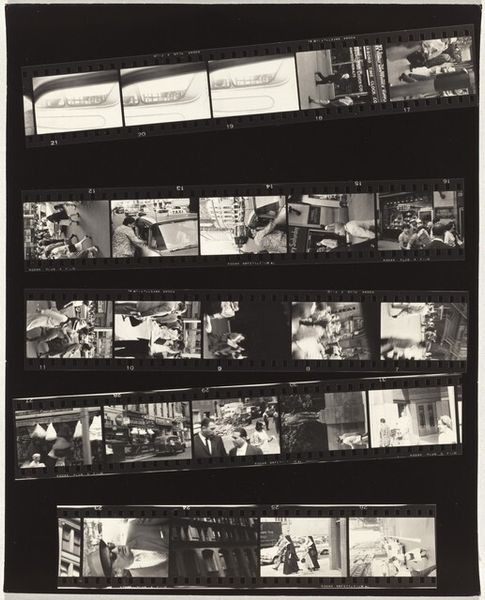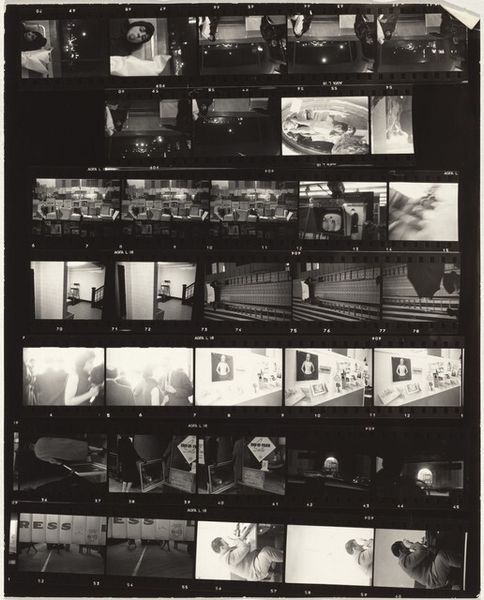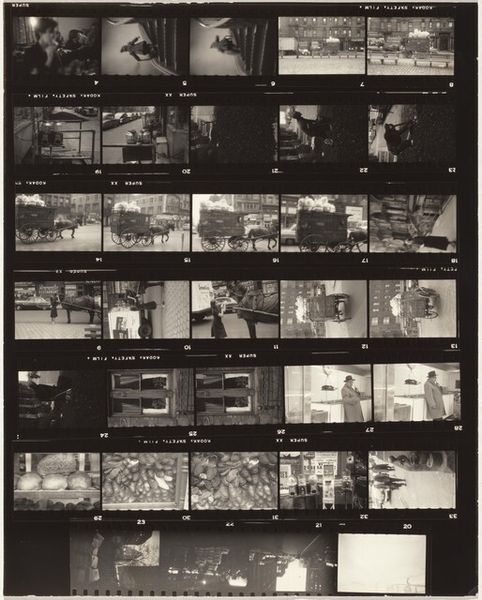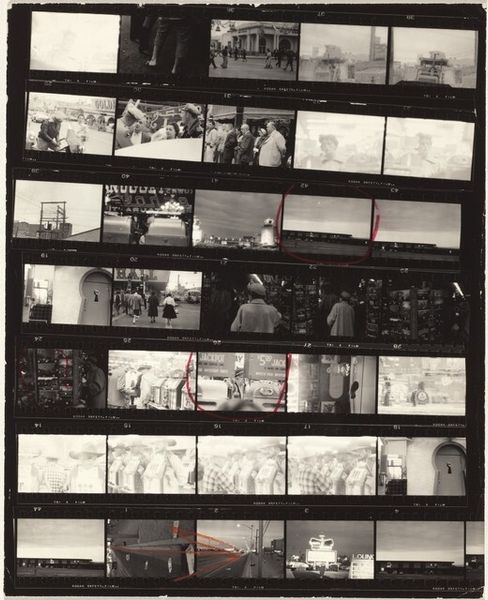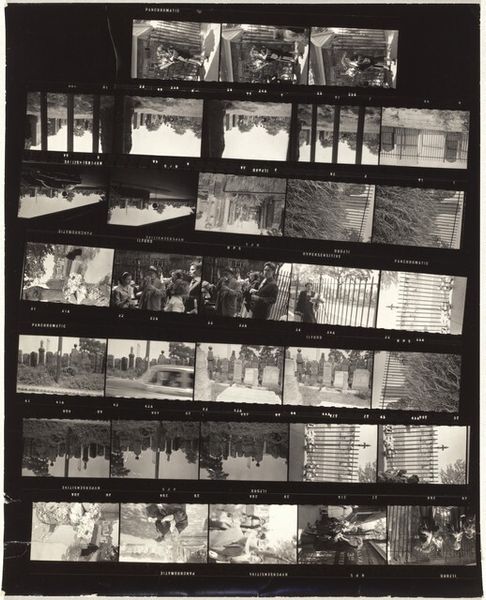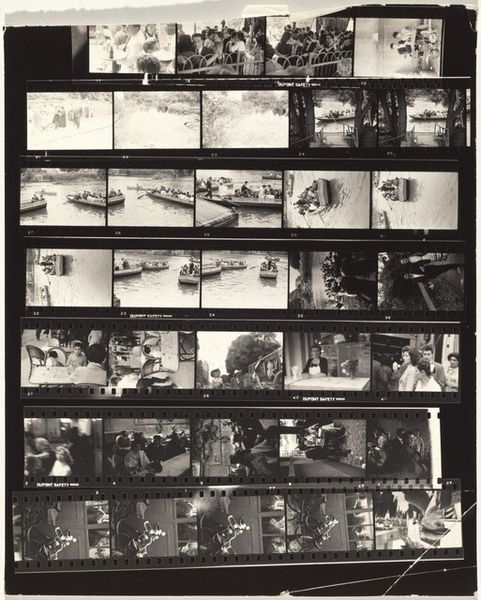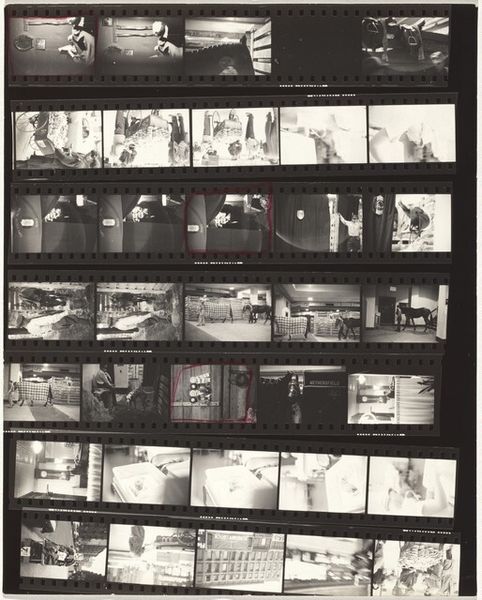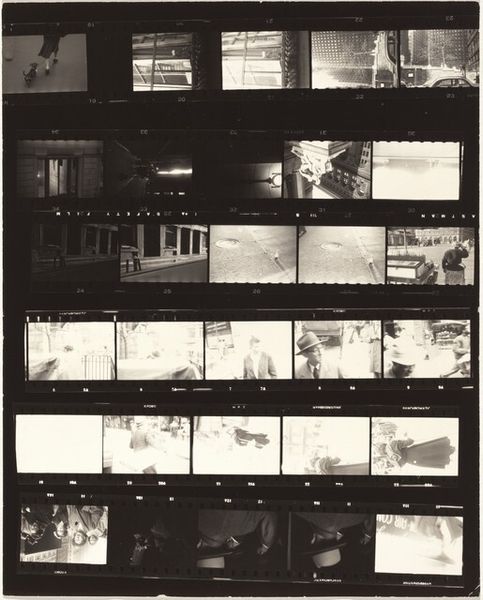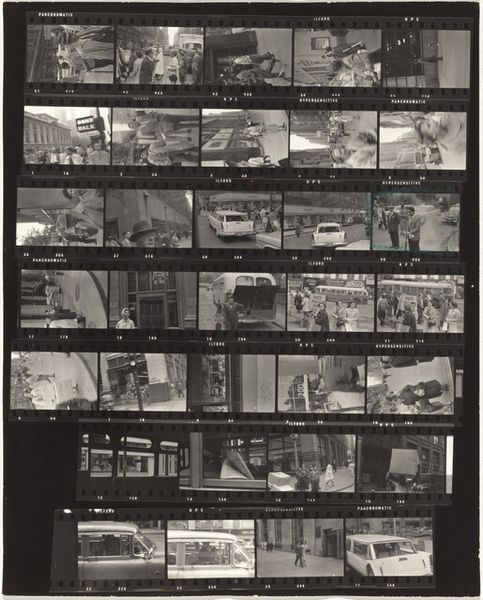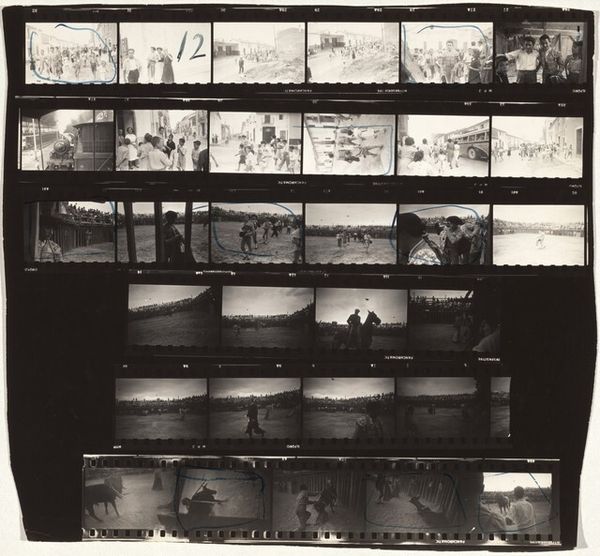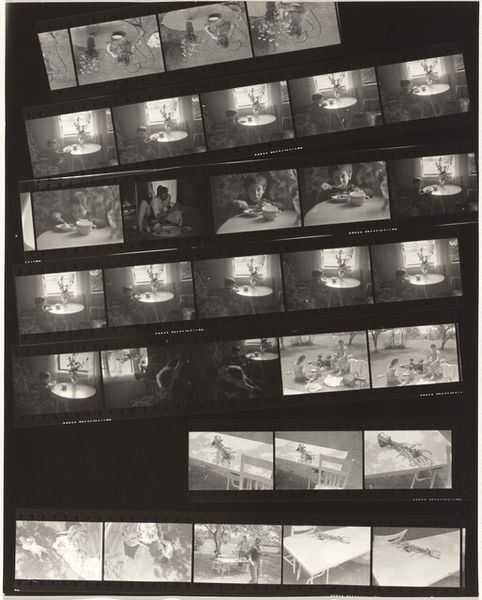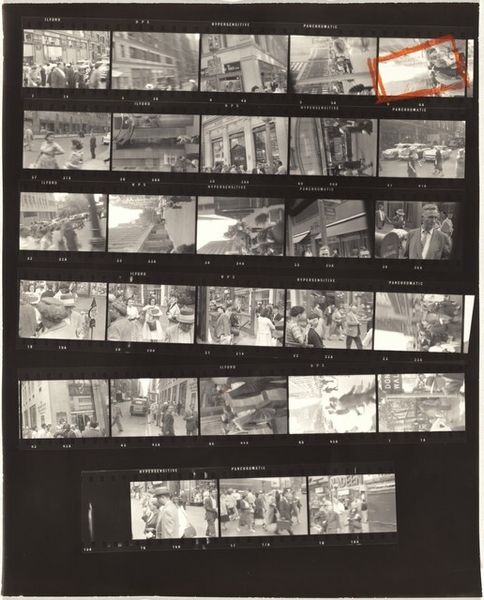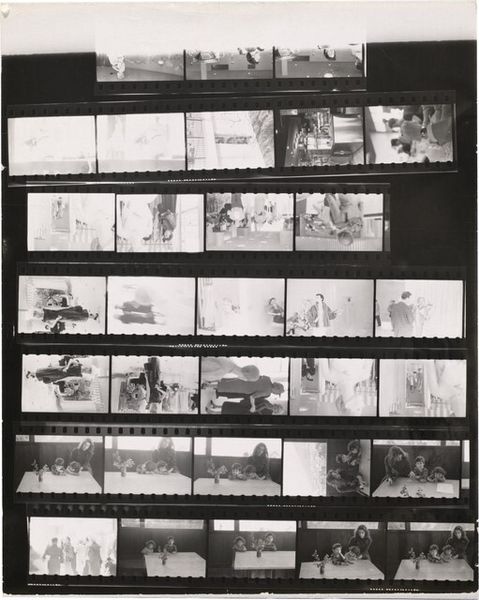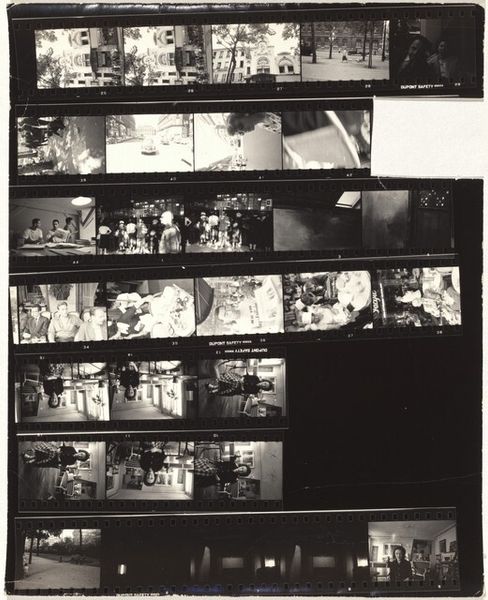
Dimensions: sheet: 25.3 x 20.3 cm (9 15/16 x 8 in.)
Copyright: National Gallery of Art: CC0 1.0
Editor: So this is Robert Frank's "Georgetown no number" from 1957, a gelatin silver print, shown here as a contact sheet of numerous images from his series “The Americans.” The sheet has a melancholic feel. So many different street scenes but they feel connected. What do you make of this presentation of photos? Curator: I think Frank's use of the contact sheet as the final artwork speaks volumes about the post-war American experience and how that was marketed and idealized through media and photography at the time. Consider the cultural and political context, this was right in the middle of the Cold War. Editor: In what way? Curator: Think about what's being displayed: everyday life, street scenes, architecture, but presented raw, without any glossy image. Frank isn’t necessarily offering these photos as discrete masterpieces to be displayed, he is sharing a way of seeing. This breaks with traditional gallery displays, disrupting the curated perfection. Editor: I can see how putting all the photos together on one sheet challenges the idea of a perfect shot. Curator: Exactly! Frank's process emphasizes the democratic potential of photography but also highlights its messy reality. Each frame could be a narrative. But it can be about the limitations or biases of visual documentation, as he chose not to print those other images from his raw work. Editor: That's an interesting way to view the entire collection of his frames; he allows the viewer to do the editing process themselves! Curator: Right, by presenting it like this, Frank opens up possibilities of understanding the American experience, the role of images, and the art market simultaneously. Editor: Thank you! That totally reshaped my perspective on the photo strip and how it invites interaction and critique.
Comments
No comments
Be the first to comment and join the conversation on the ultimate creative platform.
